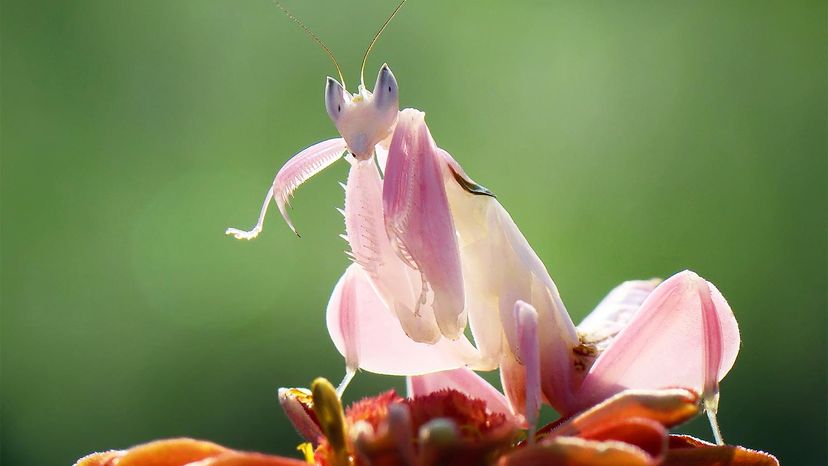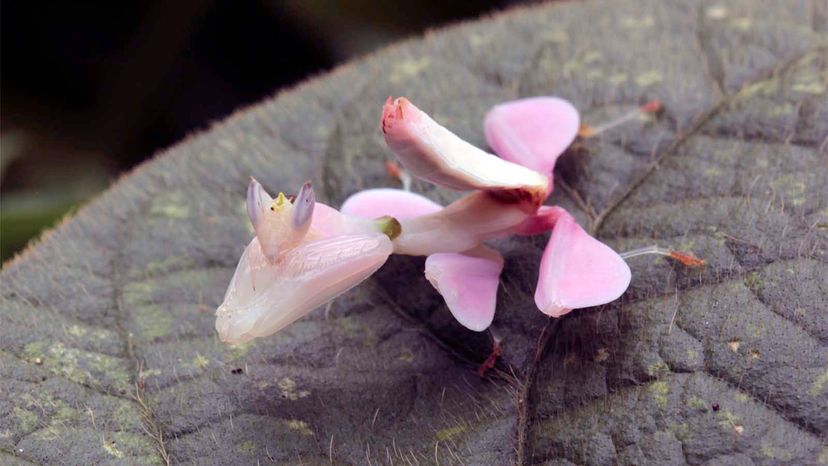
The orchid mantis (Hymenopus coronatus) lives in the rainforests of Southeast Asia. It has become popular with insect breeders in the pet trade thanks to its striking looks. The females are big, measuring 2.3 to 2.7 inches (6 to 7 cm) long; their male counterparts average only 0.7 to 1.1 inches (2 to 3 cm) long.
Both closely resemble flowers that are found in their natural environments, like the pink orchid. Since their discovery more than 100 years ago, it was thought these floral mantises evolved to their beautiful pink and white colors and wide flat legs to imitate orchid blooms and confuse other animals.
Advertisement
Then, they would ambush foraging butterflies, moths, beetles, or even frogs and scorpions.




